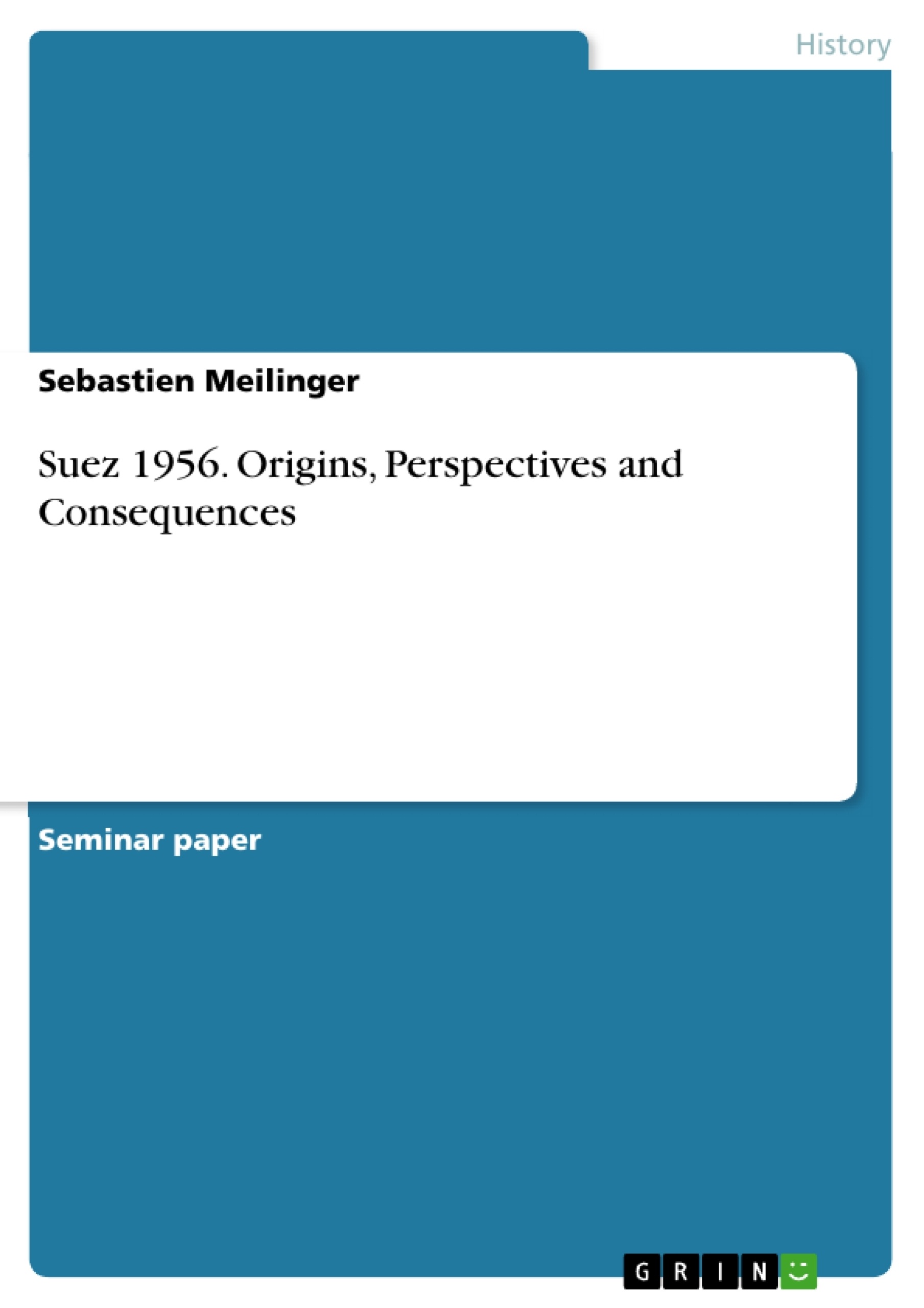The Suez Crisis has been studied from many different perspectives and has become a synonym for a watershed moment of post-war history. The ongoing turbulences in many parts of the Middle East are characterized by excessive violence, sectarian divides, ethnic cleansing and political instability. Many of those conflicts can be linked to the foundation of the State of Israel in 1948, as not all parties were provided with a satisfying solution. More over the Sykes Picot Agreement set the basis for an instable region and planted the seeds for many conflicts to come.
In this timeline besides the Israeli War of Independence there are many milestones exhibiting different crises and wars such as the Six Day War or the Yom Kippur War. This long line of conflicts is not limited to Israeli-Arab wars but also includes for instance the reinstitution of the Shah or the most recent ongoing tragedy which is the Syrian Civil War. The 1956 Suez Crisis can be ranged along this long line of events however with the crucial difference that its significance and repercussions are not limited to the Middle East. In this seminar paper it will be attempted to explain how this turning point of history came about and to what extent it was necessary or evitable. The consequences of the Suez Crisis will be discussed from individual countries perspectives and also its significance on a systemic level.
In the first section the various factors leading up to the Suez Crisis will be analysed, followed by an assessment of the different motives of the participating countries. The third section will inquire how the Suez Crisis affected the British, French, Israeli and American course and how the overall significance of Suez played out in the long run.
Table of Contents
- Introduction
- Sources and factors leading up to the Suez Crisis
- Motives of the participating parties
- France
- USA
- Israel
- Consequences of the Suez Crisis
- Conclusion
Objectives and Key Themes
The seminar paper aims to explain the origins of the Suez Crisis, analyze the motives of the participating countries, and assess its consequences from individual and systemic perspectives. The paper also seeks to determine if the crisis was inevitable or avoidable.
- The nationalization of the Suez Canal by Gamal Abdel Nasser as the catalyst for the Suez Crisis.
- The role of the Aswan Dam project and the Czech arms deal in escalating tensions.
- The impact of the Suez Crisis on the regional balance of power and international relations.
- The economic and political factors that contributed to the Suez Crisis.
- The different perspectives and motivations of France, the USA, Israel, and Egypt in the Suez Crisis.
Chapter Summaries
The first chapter provides an introduction to the Suez Crisis and its historical significance. The second chapter analyzes the various sources and factors leading up to the crisis, including the long-term developments, medium-term economic pressures, and immediate events that contributed to the situation. The third chapter explores the motivations of the participating countries, focusing on France, the USA, and Israel, examining their strategic interests and political goals in the crisis.
Keywords
Suez Crisis, Gamal Abdel Nasser, Aswan Dam, Czech arms deal, nationalization, international relations, regional balance of power, France, USA, Israel, Egypt, British-French-Israeli collusion, Cold War, economic pressures, political instability, historical turning point.
- Quote paper
- Sebastien Meilinger (Author), 2014, Suez 1956. Origins, Perspectives and Consequences, Munich, GRIN Verlag, https://www.grin.com/document/323625



